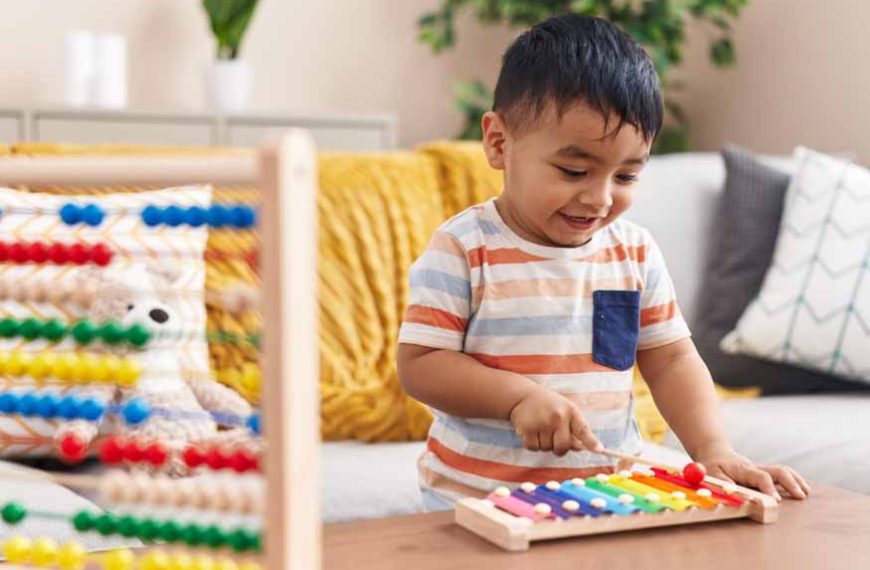As we guide our children through the maze of life, discipline plays a crucial role in shaping their character and behavior. Positive discipline is a compassionate approach that focuses on teaching children valuable life skills while fostering a strong parent-child connection. But it is important to acknowledge the fine line between supporting your children through positive discipline techniques and controlling them. And it is this line that we will explore, encouraging parents to learn how to control children in a manner that supports their overall development.
What do we mean by Positive Discipline?
Positive discipline is an approach to parenting that emphasizes teaching children appropriate behavior through positive reinforcement, communication and mutual respect. Unlike traditional discipline methods that may rely on punishment or authoritarian control, positive discipline techniques focus on guiding children to make responsible choices, develop self-control and build a strong sense of self-worth. The goal is to foster a nurturing and supportive environment that promotes the child’s overall well-being while maintaining a positive parent-child relationship.
Why is Positive Discipline Important?
Positive discipline is important for several reasons. Below are reasons why is positive discipline important in child-rearing:
- Promotes Healthy Parent-Child Relationships:
- Encourages Responsible Behavior:
- Enhances Self-Esteem and Confidence:
- Develops Emotional Intelligence:
- Teaches Life Skills:
- Creates a Positive Learning Environment:
- Reduces Negative Behavior:
- Promotes Long-Term Relationship Skills:
- Encourages Open Communication:
- Breaks the Cycle of Harsh Discipline:
Positive discipline builds a foundation of trust and mutual respect between parents and children. By focusing on communication and understanding, it fosters a positive and supportive relationship. Children are more likely to feel secure and emotionally connected when discipline is approached with empathy and respect.
Instead of relying on punishment, positive discipline teaches children to make responsible choices and understand the consequences of their actions. This approach emphasizes the development of self-discipline and self-control, encouraging children to think critically about their behavior.
Positive discipline reinforces positive behaviors through praise and encouragement. Children who receive positive reinforcement are more likely to develop a positive self-image and higher self-esteem. This, in turn, contributes to increased confidence and a sense of competence.
Positive discipline involves addressing and understanding emotions. By encouraging children to express their feelings and helping them manage emotions, parents contribute to the development of emotional intelligence. Children learn to identify, understand, and regulate their emotions, leading to healthier social interactions.
Positive discipline activities focus on teaching problem-solving skills and encouraging children to take responsibility for their actions. These life skills are essential for navigating challenges, making sound decisions, and building resilience. Positive discipline prepares children for success in various aspects of their lives.
When discipline is approached positively, it creates an environment where children feel safe to explore, learn, and express themselves. Positive discipline activities foster a love of learning, as children are more likely to engage in activities without fear of harsh consequences.
By emphasizing positive reinforcement and teaching appropriate behavior, positive discipline helps reduce negative behaviors. Children understand the expectations and consequences, leading to a more harmonious family environment.
The communication and problem-solving skills learned through positive discipline are valuable for building positive relationships throughout life. Children who experience positive discipline are more likely to develop healthy relationships with peers, teachers, and later, with their own families.
Positive discipline encourages open and honest communication between parents and children. Children feel more comfortable expressing their thoughts and concerns, fostering a climate where issues can be addressed collaboratively.
Positive discipline helps break the cycle of harsh and punitive discipline methods that may perpetuate negative behavior patterns. By choosing positive approaches, parents contribute to a more compassionate and understanding approach to parenting.
Key Features of Positive Disciplining:
In order to create an environment that supports a disciplined approach to your child’s well-being, Instead of learning simply how to control children, we want to support their evolution in a structured and disciplined manner. let’s look at what constitutes positive discipline:
- Respectful Communication:
- Setting Clear Expectations:
- Consistency:
- Positive Reinforcement:
- Teaching Problem-Solving Skills:
- Logical Consequences:
- Modeling Positive Behavior:
- Time-In Instead of Time-Out:
Positive discipline involves open and respectful communication between parents and children. It encourages parents to actively listen to their children, express expectations clearly, and involve them in decision-making processes.
Establishing clear and reasonable expectations is crucial for positive discipline. Children benefit from knowing what is expected of them and understanding the consequences of their actions. Clear guidelines create a sense of security and help children make informed choices.
Consistency is key in positive discipline. Parents need to apply rules and consequences consistently to provide a stable and predictable environment. This consistency helps children understand the boundaries and expectations in their daily lives.
Positive discipline places a strong emphasis on reinforcing positive behaviors. Parents are encouraged to praise and reward their children for making good choices, exhibiting kindness, or achieving goals. This positive reinforcement helps build the child’s self-esteem and motivation to continue positive behaviors.
Instead of simply imposing solutions, positive discipline involves teaching children problem-solving skills. Parents guide their children through the process of identifying problems, brainstorming solutions, and making decisions. This approach empowers children to think critically and learn from their experiences.
Positive discipline often employs logical consequences that are directly related to the child’s behavior. These consequences are designed to be educational rather than punitive, helping children understand the cause-and-effect relationship of their actions.
Parents play a crucial role in shaping their children’s behavior through modeling. Positive discipline encourages parents to exemplify the behaviors and values they wish to instill in their children. Children are more likely to emulate positive behavior when they observe it consistently in their parents.
Positive discipline favors a “time-in” approach over traditional “time-out.” Rather than isolating a child, a time-in involves discussing the issue together in a calm and supportive environment. This promotes communication and emotional intelligence.
Positive Discipline Activities
If you are starting out now, in creating a supportive environment for your little one, here are ten positive discipline examples to get you started:
- Family Meetings:
- Behavior Charts:
- Role-Playing:
- Storytelling:
- Mindfulness and Relaxation Activities:
- Problem-Solving Games:
- Gratitude Activities:
- Collaborative Art Projects:
- Family Service Projects:
- Apology and Forgiveness Exercises:
Hold regular family meetings to discuss expectations, share feelings and brainstorm solutions to common challenges. This encourages open communication and involves children in decision-making processes.
Create a positive behavior chart where children can earn stickers or stars for demonstrating good behavior. Once they reach a certain number, they can be rewarded with a special privilege or treat.
Use role-playing to help children practice appropriate responses to different situations. This can be particularly effective in teaching conflict resolution and communication skills.
Share stories or read books that highlight positive values and behaviors. Afterward, discuss the story and ask children how they can apply the lessons learned in their own lives.
Teach children mindfulness and relaxation techniques to help them manage stress and emotions. This can include deep breathing exercises, guided imagery, or simple yoga poses.
Play games that involve critical thinking and problem-solving. Board games, puzzles and cooperative games encourage children to strategize, work together, and develop decision-making skills.
Cultivate a sense of gratitude by engaging in activities where children can express thanks. This might include creating a gratitude jar, where they write down things they’re thankful for and place them in the jar.
Foster teamwork and cooperation through collaborative art projects. Working together on a creative endeavor encourages communication, sharing and compromise.
Engage in community service or family projects that emphasize empathy and altruism. This could involve volunteering at a local charity, organizing a community clean-up, or supporting a cause.
Teach children the importance of apologizing and forgiving by engaging in activities that promote understanding and empathy. This might involve role-playing, creating apology cards, or discussing real-life scenarios.
In essence, positive discipline lays the groundwork for a nurturing and supportive environment that promotes the holistic development of children. It not only addresses immediate behavioral issues but also equips children with the skills and mindset needed to navigate the complexities of life in a positive and constructive manner. EuroKids aims to create a positive and supportive learning space where children can thrive emotionally, socially, and academically. Together, we can ensure that our little changemakers step into the world with confidence.















